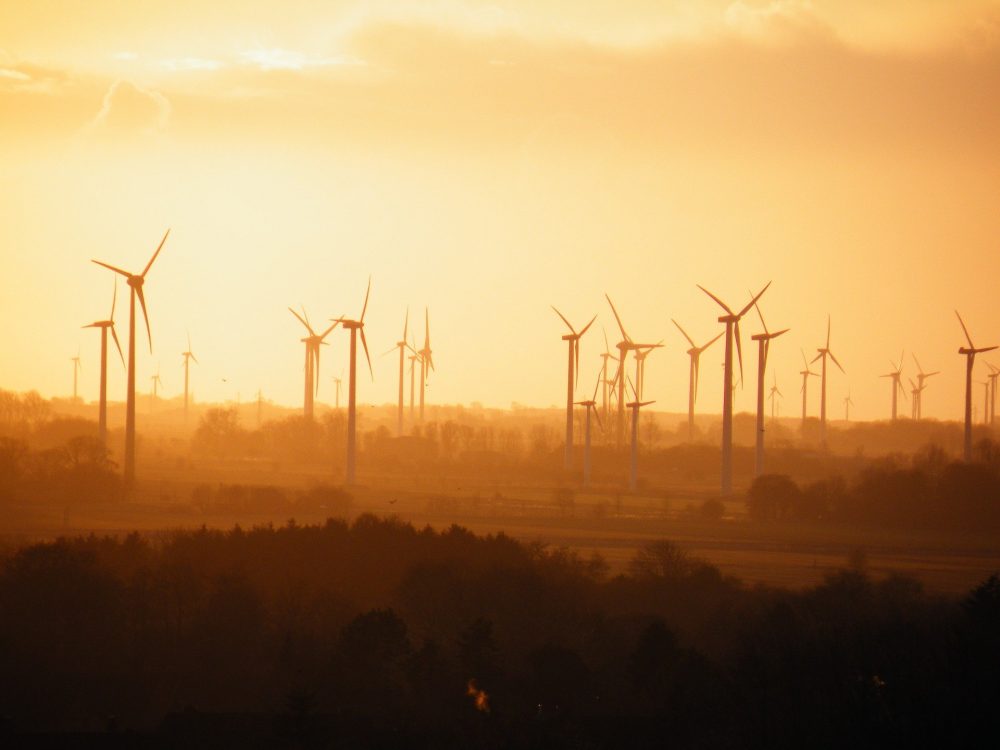According to Destatis, wind power was the most important source of energy for electricity generation in Germany in 2023 with a share of 31.0 %. The Electricity generation from renewable energy sources rose by 6.7 %, while that from conventional energy sources fell by 27.8 %. In total, 11.8 % less electricity was fed into the grid than in the previous year. Imported electricity volumes rose accordingly, while exported electricity volumes declined. The main reasons for the decline were lower electricity demand as a result of the economic slowdown in energy-intensive industries and increased imports of electricity from abroad.
With a share of 56.0%, the majority of the electricity generated and fed into the grid in 2023 came from renewable energy sources. In 2022, the share was still 46.3 %. Electricity generation from these sources increased by 6.7 % in 2023. In contrast, the feed-in of electricity from conventional energies fell by 27.8 % to a share of 44.0 % (2022: 53.7 %).
Renewable energies: feed-in from wind power increased by 13.8

Electricity feed-in from wind power increased by 13.8 % in 2023 compared to 2022. Wind power was thus the most important source of energy for electricity generation in Germany with a share of 31.0 %. In 2022, coal was still the most important energy source at 33.2 % and the share of wind power in electricity generation was significantly lower at 24.0 %. The reasons for the significant increase in the share were a good wind year in 2023 and the 4.3 % increase in capacity with a simultaneous reduction in total electricity generation.
The share of electricity fed into the grid from photovoltaics rose slightly to 11.9% in 2023 (2022: 10.6%). However, this increase is solely due to the lower total electricity generation. At 53.6 billion kilowatt hours, the amount of electricity fed into the grid declined (-1.3 %) despite an 18.0 % increase in photovoltaic capacity. In 2022, the amount of electricity fed into the grid from photovoltaics amounted to 54.3 billion kilowatt hours, which was mainly due to an unusually sunny year.
Conventional energy sources: less electricity from coal
The generation and feed-in of electricity from coal-fired power plants recorded a significant decline in 2023 (-30.8 %). The share of coal-fired electricity in total generation fell to 26.1 % (2022: 33.2 %). Coal was therefore still the second most important energy source for electricity generation in Germany in 2023. Electricity feed-in from natural gas rose by 3.9 % to a share of 13.6 % in 2023, after falling to a multi-year low of 11.5 % in 2022 due to the tense situation on the gas market. Due to the shutdown of the last nuclear power plants on April 15, 2023, the amount of electricity fed into the grid from nuclear energy fell significantly in 2023 compared to the previous year, accounting for just 1.5 % of the electricity fed in (2022: 6.4 %).
Significant increase in imported electricity, decline in exported electricity
The amount of electricity imported to Germany increased by 40.6% to 69.3 billion kilowatt hours in 2023 compared to 2022. The ratio of imported electricity to domestically produced electricity was therefore 15% in 2023. The amount of electricity exported from Germany in 2023 fell by 21.5% compared to the previous year to 60.1 billion kilowatt hours. At 9.2 billion kilowatt hours, Germany imported more electricity than it exported for the first time since 2002. At that time, the import surplus amounted to 6.6 billion kilowatt hours.
Development of electricity feed-in by energy source since 2018
2023 was the first year in which more electricity was fed into the grid from renewable energy sources than from conventional energy sources in almost every month. Overall, feed-in from renewable energies reached a new high of 251.8 billion kilowatt hours and a share of 56.0 % in 2023.
The gap between electricity feed-in from conventional and renewable energy sources had already narrowed in previous years. While 62.8% of electricity feed-in was still generated from conventional energy sources in 2018, this figure had fallen to 44.0% by 2023. However, it should be noted that the electricity market in 2023 was influenced by the lower demand for electricity and increased imports. Electricity feed-in from coal declined from 2018 to 2020, but almost reached the 2018 level again in 2022. In 2023, however, electricity feed-in from coal fell significantly again and in June 2023 even fell below the previous low of April 2020.
Electricity feed-in from wind power reached a new high of 139.3 billion kilowatt hours in 2023, surpassing the previous high of 128.7 billion kilowatt hours in 2020. While electricity feed-in from natural gas increased from 2018 to 2020, it declined from the second half of 2021 due to higher gas prices and fell back to the 2018 level in 2022 due to the further tightening of the situation on the gas market. In 2023, electricity feed-in from natural gas rose again slightly to a total of 61.0 billion kilowatt hours, but remained below the level of 2019 to 2021.
Electricity feed-in from photovoltaics has risen slightly since 2018 At 53.6 billion kilowatt hours in 2023, it remained slightly below the previous high from 2022 (54.3 billion kilowatt hours).
Picture above: Wind power is now the softest energy source in Germany. Photo: Pixabay

